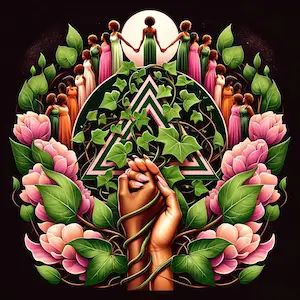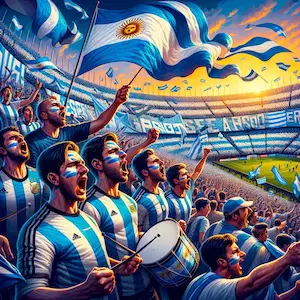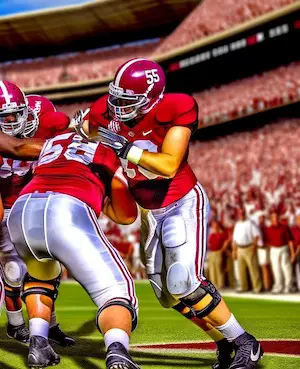Hawaiian war chants, or mele hula kuahu, are an integral part of Hawaiian culture and traditional chants. These powerful and passionate songs tell the story of the ancient warriors who fought for their people and their land.
In this article, we will delve into the fascinating world of Hawaiian war chants, exploring their history, elements, and the role of hula in their performance.

Table of Contents
Origins of War Chants
Hawaiian war chants date back to ancient times, long before the arrival of Westerners on the islands. Passed down through generations, these chants were a means of communication, storytelling, and spiritual connection. War chants were often composed by kahuna (priests) or ali’i (chiefs), who would receive inspiration through visions, dreams, or direct communication with the gods.
Purpose and Significance
War chants served a variety of purposes in ancient Hawaiian society. They were used to motivate and inspire warriors before battle, to record the feats of great warriors, and to invoke divine intervention for victory. The chants also played an essential role in preserving the history and genealogy of the Hawaiian people, ensuring that their stories would live on through the ages.
Elements of Hawaiian War Chants
Rhythmic Patterns
Hawaiian war chants are characterized by their powerful and rhythmic patterns. The rhythm is created by a combination of percussive instruments, such as the ipu (gourd drum) and pahu (sharkskin drum), and the melodic lines sung by the performers. This driving rhythm serves to energize and focus the warriors as they prepare for battle.
Instrumentation
In addition to the ipu and pahu drums, other traditional Hawaiian instruments are often used in war chants. These include the ‘uli’uli (feathered gourd rattle), pu’ili (split bamboo rattle), and kala’au (wooden sticks). These instruments add depth and texture to the chants, creating a rich and immersive soundscape.
Language and Imagery
Hawaiian war chants are composed in the Hawaiian language and are rich with poetic imagery and metaphor. They often depict the natural world, drawing on the power of the land, sea, and sky to illustrate the strength and prowess of the warriors. The language used in these chants is often kaona, or hidden meaning, allowing for multiple layers of interpretation and understanding.
Traditional Hawaiian War Chants
Eia Hawai’i (Behold Hawai’i)
Oli (Chant in Hawaiian language):
Eia Hawai'i, he moku, he kanaka He kanaka Hawai'i e I ke kai loa a holo a'e He wa'a he moku, he moku he wa'a
Translation (English):
Behold Hawai'i, an island, a person A Hawaiian person In the faraway ocean voyaging A canoe is an island, an island is a canoe
Kaulana Nā Pua (Famous Are the Flowers)
Oli (Chant in Hawaiian language):
Kaulana nā pua a'o Hawai'i Kūpa'a ma hope o ka 'āina Hiki mai ka 'elele o ka loko ino Palapala 'ānunu me ka pākaha
Translation (English):
Famous are the flowers of Hawai'i Standing firm behind the land The messenger of evil approaches With a document of greed and a bludgeon
He Inoa No Kamehameha (A Name Chant for Kamehameha)
Oli (Chant in Hawaiian language):
He inoa nō Kamehameha
He pua nāna i mālama
Mai Hawai'i a Ni'ihau
He pūnana noho i ka lani
Translation (English):
A name chant for Kamehameha A flower he has cared for From Hawai'i to Ni'ihau A nest dwelling in the heavens
Aia La ‘O Pele (Pele Is There)
Oli (Chant in Hawaiian language):
Aia la ‘o Pele i Hawai‘i
I ka lua o Halema‘uma‘u
‘O Mo‘ikeha ke kupuna
Kamaiki a Pele i Kilauea
Translation (English):
Pele is there in Hawai‘i
In the pit of Halema‘uma‘u
Mo‘ikeha is the ancestor
Pele, the young child, is in Kilauea
He Mele No Lono (A Chant for Lono)
Oli (Chant in Hawaiian language):
E Lono i ka waokele
I ka ua loku i ka pali
Eia ka wa a Lono
Ho‘oulu ka ‘āina
Translation (English):
Lono in the lush forest
In the pouring rain on the cliff
This is the time of Lono
To make the land fruitful
He Inoa No Kīwala‘ō (A Name Chant for Kīwala‘ō)
Oli (Chant in Hawaiian language):
He inoa no Kīwala‘ō
Kīwala‘ō kāne a ka lani
Hānau i Kawaihae
Kū i ka moku, kū i ka ‘āina
Translation (English):
A name chant for Kīwala‘ō Kīwala‘ō, the heavenly man Born in Kawaihae Established in the island, established in the land
Kūʻē: Resistance and Defiance
One of the most well-known Hawaiian war chants is the Kūʻē, which means “resistance” or “defiance.” This chant was composed during the reign of King Kamehameha I, who sought to unite the Hawaiian Islands under his rule. The Kūʻē is a powerful expression of the spirit of resistance against foreign invasion and a call to arms for the native warriors.
Kūʻē: The Battle of Nuihana
The Kūʻē was prominently featured in the Battle of Nuihana, a pivotal conflict between Kamehameha’s forces and the armies of O’ahu and Kaua’i. The chant was performed by the warriors on both sides of the battle, invoking the gods’ protection and guidance. Today, the Kūʻē remains a symbol of Hawaiian pride and resistance against outside influence.
The Role of Hula in Hawaiian War Chants
Hula Kahiko: Ancient Hula
Hula, the traditional Hawaiian dance form, is deeply intertwined with the performance of war chants. The ancient style of hula, known as hula kahiko, often accompanied these chants, with dancers performing powerful and vigorous movements to embody the emotions and themes of the chants. Hula kahiko served not only as a visual representation of the chants but also as a way to preserve and transmit the stories and history contained within them.
Hula and Warfare
The connection between hula and warfare is further emphasized by the fact that hula was often taught in the same schools as martial arts. This was because the physical movements and discipline required for hula were seen as excellent preparation for the rigors of battle. In addition, hula performances were often held before and after battles as a way to honor the gods and give thanks for their protection.
Modern Interpretations and Usage
Contemporary Performances
In contemporary times, Hawaiian war chants continue to be performed at cultural events, competitions, and hula festivals. These performances showcase the skill and talent of modern practitioners while also connecting them to their ancestors and cultural heritage. The powerful rhythms and evocative language of the chants captivate audiences, ensuring that this ancient art form remains relevant and vital today.
Cultural Revival and Preservation
The resurgence of interest in traditional Hawaiian culture has led to a revival of Hawaiian war chants and hula in recent years. Organizations such as the Merrie Monarch Festival and the Polynesian Cultural Center have played a significant role in preserving and promoting these art forms, ensuring that they will continue to be passed down to future generations.
Conclusion
Hawaiian war chants are a fascinating and integral aspect of Hawaiian culture and tradition. From their ancient origins to their modern interpretations, these powerful and evocative songs continue to inspire and connect the Hawaiian people to their heritage. As we celebrate and preserve these art forms, we ensure that the stories, history, and spirit of the Hawaiian warriors will live on for generations to come.
Hawaiian War Chants Frequently Asked Questions
What are Hawaiian war chants?
Hawaiian war chants, or mele hula kuahu, are traditional songs used to motivate and inspire warriors, record their feats, and invoke divine intervention for victory. They are characterized by their powerful rhythms, poetic language, and rich imagery.
How are hula and Hawaiian war chants connected?
Hula, the traditional Hawaiian dance form, is deeply intertwined with the performance of war chants. The ancient style of hula, hula kahiko, often accompanied these chants, with dancers performing powerful and vigorous movements to embody the emotions and themes of the chants. Hula also served as a way to preserve and transmit the stories and history contained within the war chants.
What is the significance of the Kūʻē war chant?
The Kūʻē is a well-known Hawaiian war chant that symbolizes resistance and defiance. Composed during the reign of King Kamehameha I, it was used in the Battle of Nuihana as a call to arms for native warriors. Today, the Kūʻē continues to represent Hawaiian pride and resistance against outside influence.
See Related Posts

Gregorian Christmas Chants

Love Spell Chants

Best Softball Chants for U12

AKA Sorority Chants

Argentina Football Chants

Short Chants and Cheers

Alabama Football Chants

Everything to Know About African Chants

